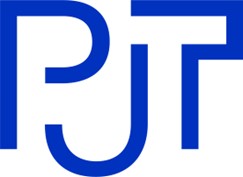Liquidity and Capital Resources
General
We regularly monitor our liquidity position, including cash and cash equivalents, investments, working capital assets and liabilities, any commitments and other liquidity requirements.
Our assets have been historically comprised of cash and cash equivalents, investments, receivables arising from advisory and placement engagements and operating lease right-of-use assets. Our liabilities generally include accrued compensation and benefits, accounts payable and accrued expenses, taxes payable and operating lease liabilities. We expect to pay a significant amount of incentive compensation toward the end of each year and during the beginning of the next calendar year with respect to the prior year’s results. A portion of annual compensation may be awarded with equity-based compensation and thus requires less cash. We expect levels of cash to decline at the end of the year and during the first quarter of each year after incentive compensation is paid to our employees. We then expect cash to build throughout the remainder of the year.
On July 29, 2024, PJT Partners Holdings LP, as borrower the ("Borrower"), entered into a syndicated revolving credit agreement (the “Credit Agreement”) and related documents with Bank of America, N.A., as the administrative agent (the “Administrative Agent”), and certain other financial institutions party thereto as lenders. The Credit Agreement provides for a revolving credit facility with aggregate principal amount of up to $100 million. Further information regarding the Credit Agreement can be found in Note 13. “Commitments and Contingencies—Commitments, Line of Credit” in the “Notes to Condensed Consolidated Financial Statements” in “—Item 1. Financial Statements” of this filing. As of June 30, 2025 and December 31, 2024, we were in compliance with the debt covenants under the Credit Agreement. Additionally, as of June 30, 2025 and December 31, 2024, there were no borrowings outstanding under the Credit Agreement.
We evaluate our cash needs on a regular basis. As of June 30, 2025 and December 31, 2024, we had cash, cash equivalents and short-term investments of $318.4 million and $546.8 million, respectively. The vast majority of these balances are either held in institutions labeled by the Financial Stability Board as global systemically important banks, money market funds or Treasury securities. Although we maintain multiple banking relationships with both global and regional banks and actively monitor the financial stability of such institutions, a failure at any institution where we maintain a banking relationship could impact our liquidity.
Our liquidity is highly dependent upon cash receipts from clients, which are generally tied to the successful completion of transactions and the timing of receivable collections. As of June 30, 2025 and December 31, 2024, total accounts receivable, net of allowance for credit losses, was $359.0 million and $320.8 million, respectively. As of June 30, 2025 and December 31, 2024, the allowance for credit losses was $5.2 million and $2.5 million, respectively. Included in Accounts Receivable, Net are long-term receivables of $98.6 million and $88.6 million as of June 30, 2025 and December 31, 2024, respectively, related to placement fees that are generally paid in installments over a period of three to four years.
Sources and Uses of Liquidity
Our primary cash needs are for working capital, paying operating expenses including cash compensation to our employees, exchanging of Partnership Units for cash, repurchasing shares of the Company’s Class A common stock, paying income taxes, dividend payments, partnership tax distributions, capital expenditures, making payments pursuant to the tax receivable agreement, commitments and strategic investments. We expect to fund these liquidity requirements through cash flows from operations and borrowings under our revolving credit facility. Our ability to fund these needs will depend, in part, on our ability to generate or raise cash in the future which depends on our future financial results, which are subject to general economic, financial, competitive, legislative and regulatory factors.
Additionally, our ability to generate positive cash flow from operations will be impacted by global economic conditions. If our cash flows from operations are significantly reduced, we may need to borrow from our revolving credit facility, incur debt, or issue additional equity. Although we believe that our revolving credit facility, and our ability to renew it, will permit us to finance our operations on acceptable terms and conditions for the foreseeable future, our access to, and the availability of, financing on acceptable terms and conditions in the future will be
